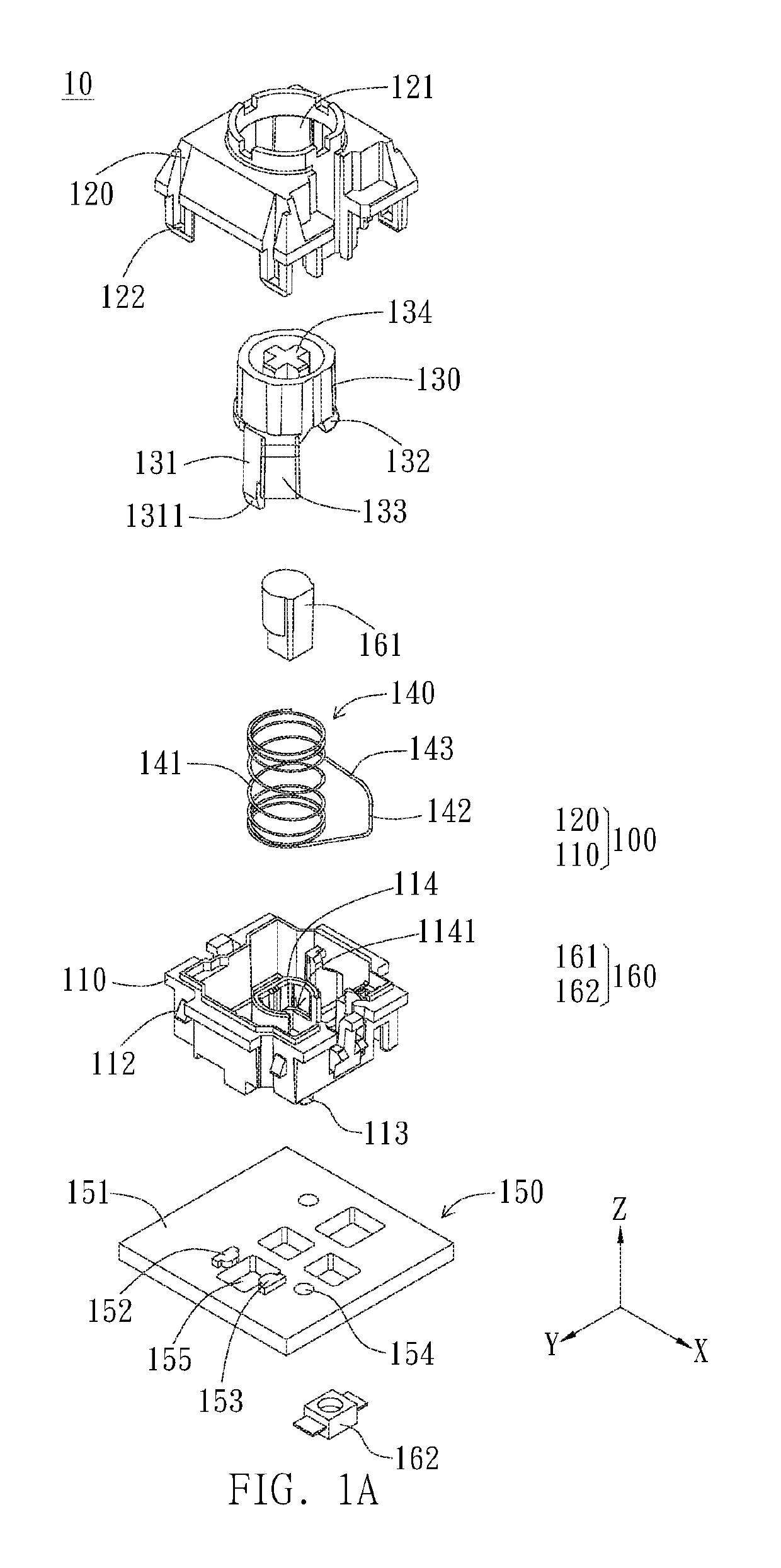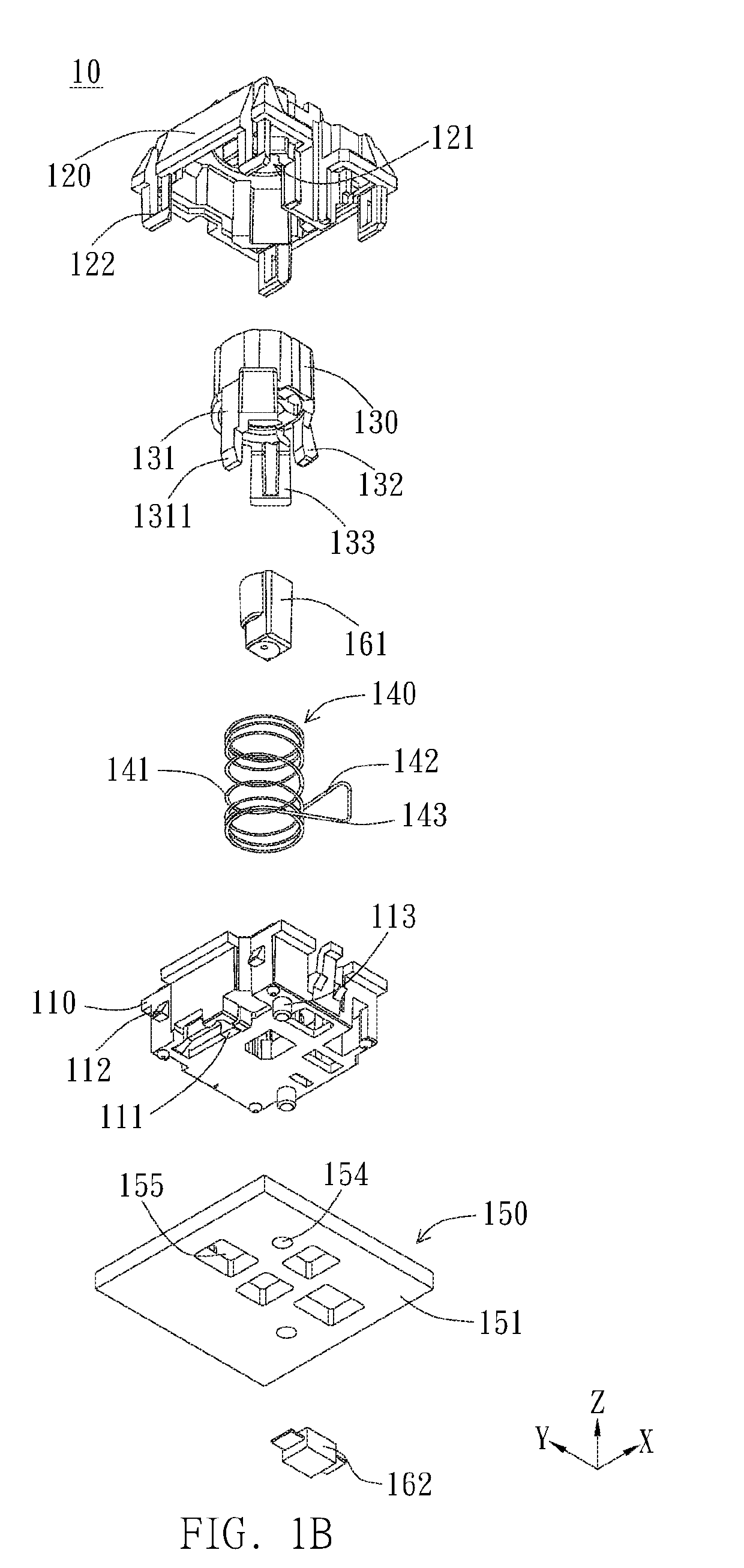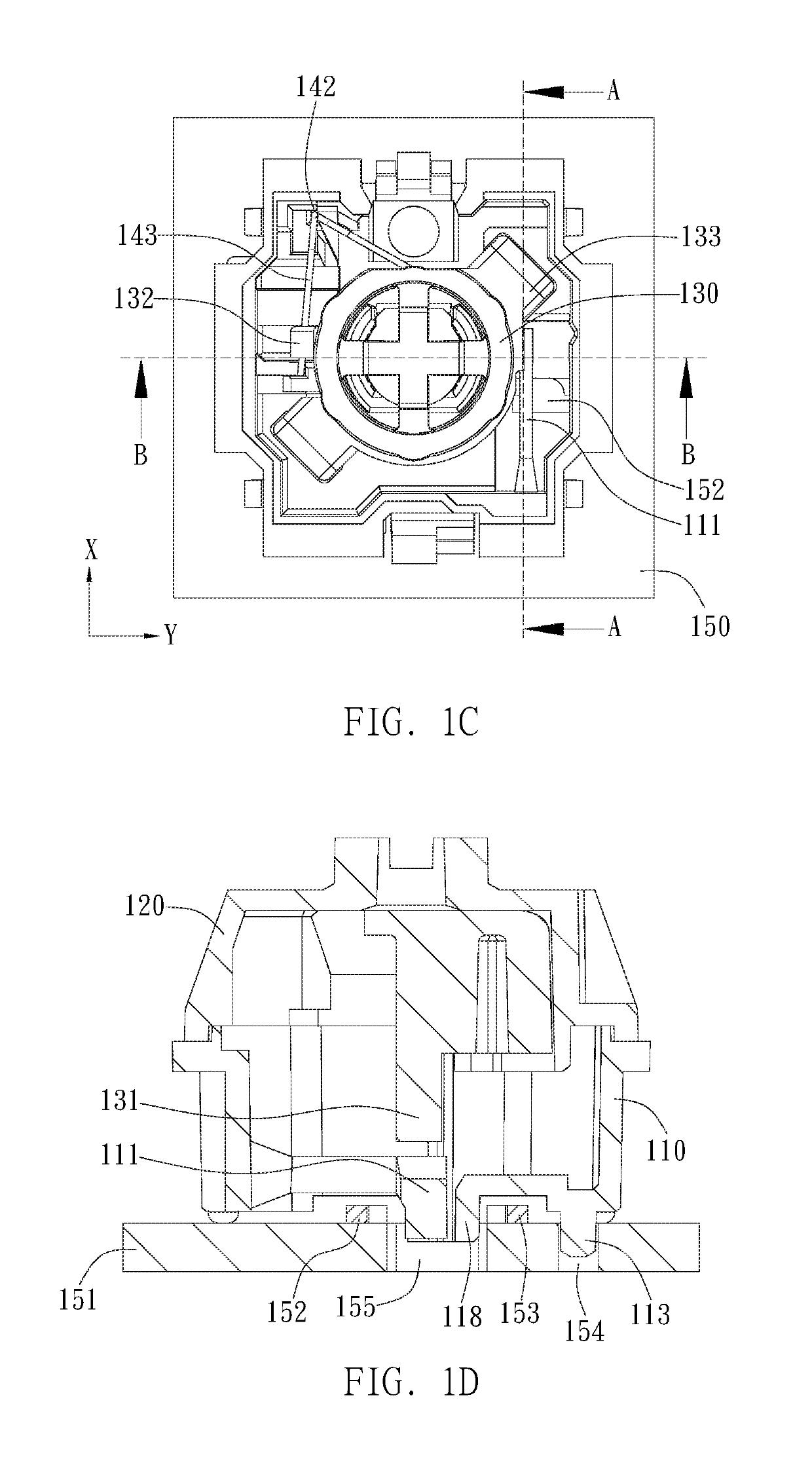Optical keyswitch
a key switch and optical technology, applied in the field of optical keyswitch, can solve the problems of poor pressing feeling, easy damage to the membrane circuit, inability to meet the user's expectations, etc., and achieve the effect of reducing the interference of external light, fast and accurate triggering, and enhancing triggering accuracy
- Summary
- Abstract
- Description
- Claims
- Application Information
AI Technical Summary
Benefits of technology
Problems solved by technology
Method used
Image
Examples
first embodiment
[0065]FIGS. 1A to 5D are schematic views of the invention, wherein FIGS. 1A and 1B are exploded views of the optical keyswitch from different viewing angles, FIG. 10 is a schematic top view of the optical keyswitch of FIG. 1A without the upper casing, and FIG. 1D is a cross-sectional view of FIG. 10 along the cutting line AA with the upper casing. As shown in FIGS. 1A to 1D, the optical keyswitch 10 includes a casing 100, a shaft 130, a resilient member 140, and a switch module 150. The casing 100 has a movable portion 111. The shaft 130 is movably disposed on the casing 100. In response to a pressing force, the shaft 130 can move along an up-down path from a non-pressed position to a pressed position. The resilient member 140 is accommodated in the casing 100. The resilient member 140 couples the shaft 130 and enables the shaft 130 to return to the non-pressed position when the pressing force is released. The switch module 150 includes a circuit board 151, an emitter 152, and a rec...
fifth embodiment
[0104]FIGS. 10 to 12B are schematic views of the invention.
[0105]FIG. 10 is an exploded view of the optical keyswitch, FIGS. 11A and 11B are respectively schematic views of the upper casing and the lower casing of FIG. 10, and FIGS. 12A and 12B are respectively a top view and a perspective view of the optical keyswitch of FIG. 10 without the keycap. As shown in FIGS. 10 to 12B, the optical keyswitch 30 of the fifth embodiment includes a keycap 310, a support mechanism 320, a restoring mechanism 330, a switch module 340, and a baseplate 350. The support mechanism 320 is disposed below the keycap 310 and configured to support the keycap 310 moving upward and downward. The support mechanism 320 has a protrusion 323. The restoring mechanism 330 is disposed below the keycap 310 and configured to provide a restoring force to enable the keycap 310 to return to a non-pressed position. The restoring mechanism 330 includes a casing 331 and a resilient member 332. The casing 331 has a movable ...
sixth embodiment
[0128]Referring to FIGS. 15A and 15B, the operation of the optical keyswitch 30′ of the sixth embodiment will be illustrated. As shown in FIGS. 15A and 15B, when the keycap 310 is not pressed, the protrusion 323 at least partially overlaps the movable portion 338 in a direction parallel to a moving direction of the keycap 310, such as the Z axis direction, the movable portion 338 has the first spatial relation with the optical path, and the receiver 343 receives the optical signal of first intensity. When the keycap 310 is pressed, the resilient member 332 is compressed, and the support mechanism 320 is driven to move along with the keycap 310, so that the protrusion 323 pushes the movable portion 338 to move, the movable portion 338 no longer has the first spatial relation with the optical path, and the optical signal received by the receiver 343 has the second intensity different from the first intensity. As such, the switch module 340 is triggered to generate the triggering signa...
PUM
 Login to View More
Login to View More Abstract
Description
Claims
Application Information
 Login to View More
Login to View More - R&D
- Intellectual Property
- Life Sciences
- Materials
- Tech Scout
- Unparalleled Data Quality
- Higher Quality Content
- 60% Fewer Hallucinations
Browse by: Latest US Patents, China's latest patents, Technical Efficacy Thesaurus, Application Domain, Technology Topic, Popular Technical Reports.
© 2025 PatSnap. All rights reserved.Legal|Privacy policy|Modern Slavery Act Transparency Statement|Sitemap|About US| Contact US: help@patsnap.com



